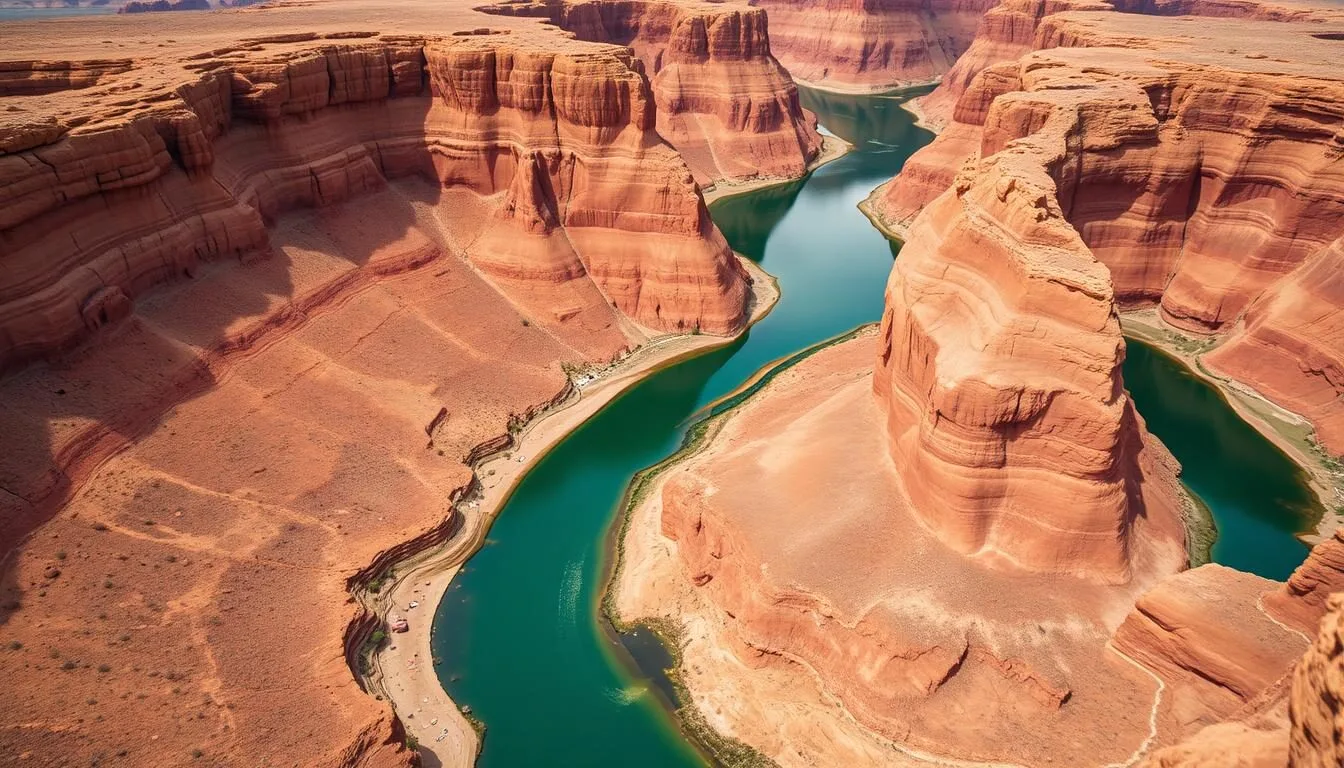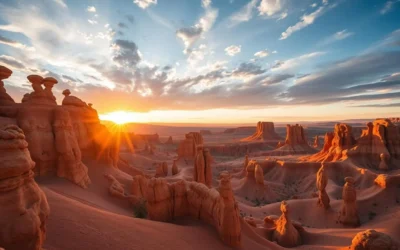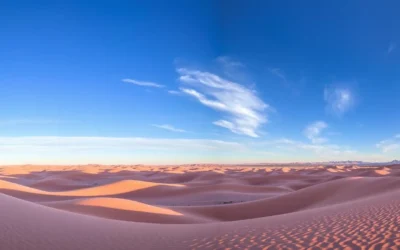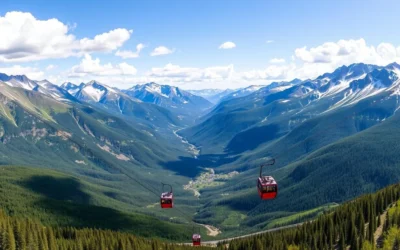The San Juan River’s epic journey carved one of the most spectacular geological wonders in the American Southwest over an astonishing 300 million years. At Goosenecks State Park in Utah, the river winds through dramatic entrenched meanders, creating a serpentine path that stretches six river miles within just 1.5 linear miles. Standing at the rim, you’ll gaze down a breathtaking 300 m (1,000 ft) to the twisting river below – a view that has remained largely unchanged since dinosaurs roamed the Earth.
Getting There & Planning Your Journey
Goosenecks State Park is located in southeastern Utah, approximately 25 miles west of Bluff and 8 miles northwest of Mexican Hat. The park sits at the end of Utah State Route 316, which branches off from US Highway 163. From major cities, you’ll need to plan accordingly – it’s about 349 miles southeast of Salt Lake City and roughly 175 miles from Moab.
Plan Your Trip to Goosenecks State Park
Ready to experience this geological wonder? Book your travel arrangements now for the best rates.
The park is accessible via a paved road that leads directly to the main viewpoint. While most vehicles can make the journey without issue, be prepared for remote driving conditions. Cell service can be spotty in this area, so downloading offline maps is recommended.
Best Time to Visit & Weather Tips
Timing your visit to Goosenecks State Park can significantly impact your experience. The park is open year-round with no seasonal closures, but weather conditions vary dramatically throughout the year.
Recommended Seasons
- Spring (April-May): Mild temperatures between 15-26°C (60-80°F) with blooming desert plants make this an ideal time to visit.
- Fall (September-October): Similar to spring conditions with comfortable daytime temperatures and cooler evenings.
- Early Morning/Late Afternoon (Summer): If visiting in summer, plan to arrive early or late to avoid midday heat.
Seasons to Avoid
- Summer (June-August): Daytime temperatures regularly exceed 38°C (100°F) with no shade available at the park.
- Winter (December-February): While temperatures are milder than summer, occasional snow and ice can make roads treacherous.
- Monsoon Season (July-August): Afternoon thunderstorms can develop quickly, creating dangerous conditions at the exposed viewpoints.
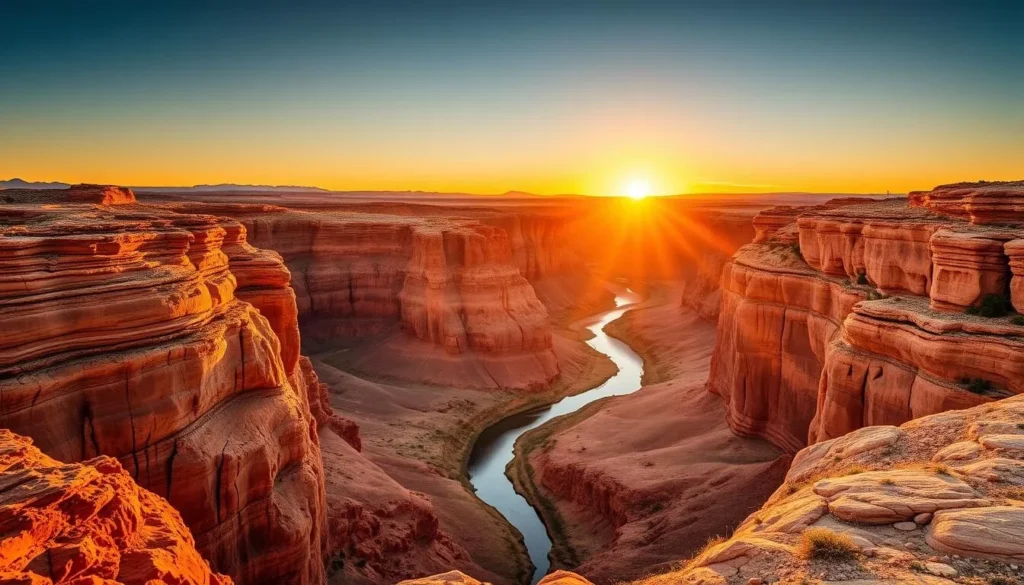
Photographer’s Tip: The golden hours around sunrise and sunset offer the most dramatic lighting for photography at Goosenecks. The low-angle light creates stunning shadows that accentuate the depth and texture of the canyon.
Getting Around Locally
Goosenecks State Park is a relatively small park centered around its main overlook. Here’s what you need to know about navigating the area:
- Park Layout: The main attraction is the scenic overlook, accessible via a short paved path from the parking area.
- Primitive Roads: Dirt roads extend in both directions from the main viewpoint for those seeking different perspectives, but high-clearance vehicles are recommended.
- No River Access: There are no maintained trails leading down to the San Juan River from within the park boundaries.
- Nearby Exploration: The towns of Mexican Hat (8 miles) and Bluff (25 miles) serve as good bases for exploring the broader region.
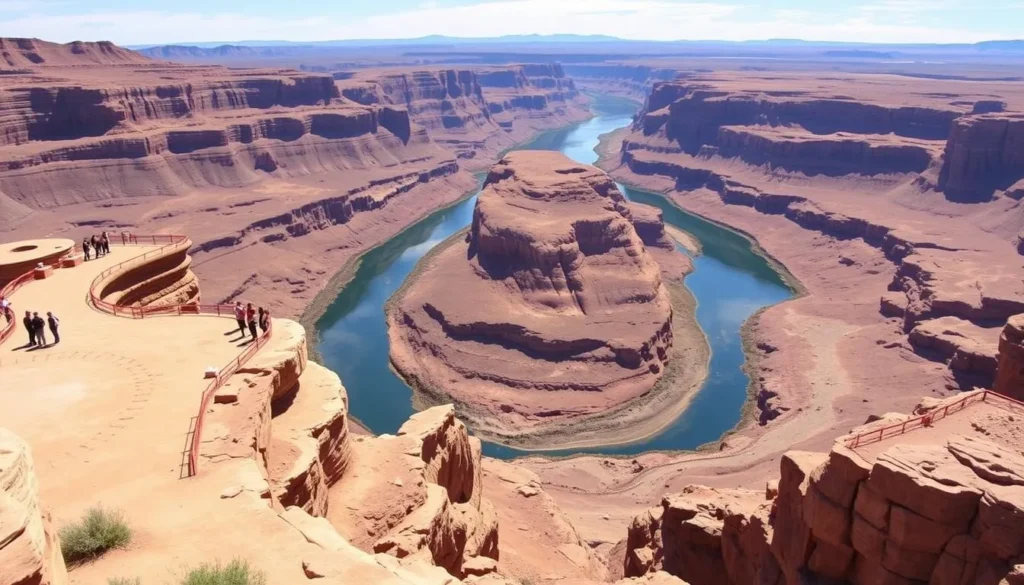
Local Tip: While the park itself is compact, combining your visit with nearby attractions like Valley of the Gods (10 miles away) or Monument Valley (30 miles away) makes for an excellent day trip itinerary.
Where to Stay
Goosenecks State Park offers primitive camping options, but many visitors prefer to stay in nearby towns with more amenities. Here are your best accommodation options:
Camping at Goosenecks
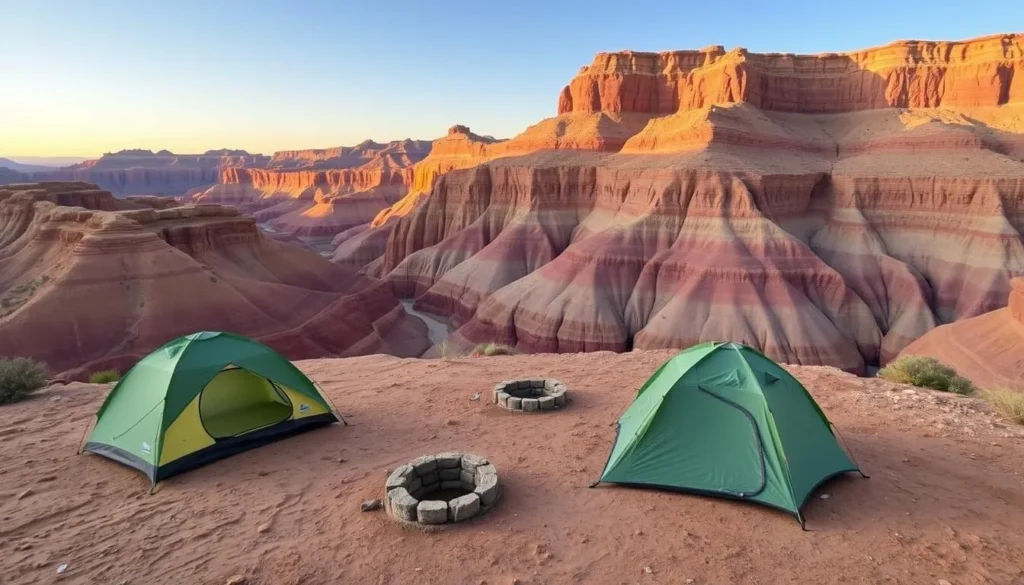
The park offers first-come, first-served primitive camping for $10 per night. Sites include fire rings and access to vault toilets, but no water, electricity, or other amenities are available. While camping near the rim offers spectacular views, be aware that the area can be quite windy.
Mexican Hat Lodging
The small town of Mexican Hat, just 8 miles from the park, offers several basic lodging options including the San Juan Inn and Hat Rock Inn. These properties provide comfortable rooms, restaurants, and make a convenient base for exploring the area.
Find the perfect place to stay near Goosenecks State Park
Bluff Accommodations
For more amenities, the historic town of Bluff (25 miles away) offers several B&Bs, motels, and restaurants. The Canyonlands Motel and Desert Rose Inn provide comfortable options with more services than you’ll find in Mexican Hat.
Important: If camping at Goosenecks, bring all necessary supplies including drinking water, food, and weather-appropriate gear. The nearest services are in Mexican Hat, and the park has no running water or electricity.
Dining & Local Cuisine
The immediate area around Goosenecks State Park has limited dining options, so planning ahead is essential:
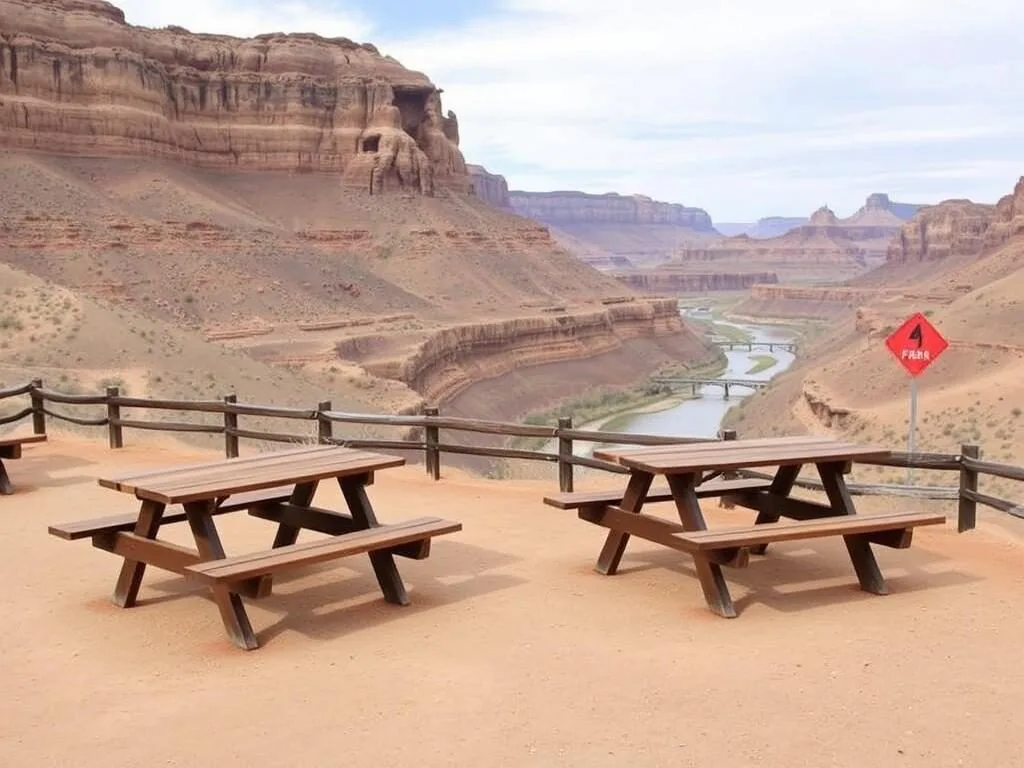
At the Park
- Picnic Areas: The park has designated picnic spots with tables, perfect for enjoying meals with a view.
- Self-Catering: Most visitors bring their own food and drinks, as there are no concessions within the park.
Nearby Options
- Mexican Hat: The San Juan Inn Restaurant offers riverside dining with Southwestern cuisine.
- Bluff: More dining options including Twin Rocks Café and Comb Ridge Bistro serving local specialties.
- Regional Dishes: Look for Navajo fry bread, green chile stew, and other Southwestern specialties on local menus.
“There’s something magical about enjoying a simple picnic while gazing out at a landscape 300 million years in the making. Pack a lunch, find a spot at the rim, and savor one of the most memorable dining views you’ll ever experience.”
Attractions, Sightseeing & Activities
While Goosenecks State Park may be small in size, it offers several memorable experiences:
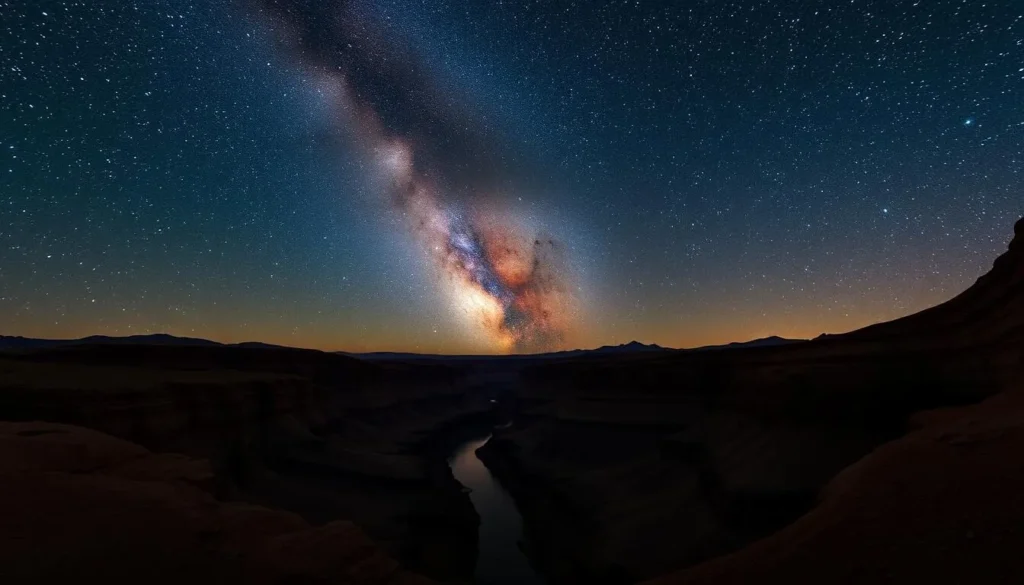
Scenic Overlooks
The main attraction is the spectacular view from the rim, where you can see the San Juan River’s dramatic meanders 300 m (1,000 ft) below. The overlook offers unobstructed panoramic views that stretch for miles, perfect for photography at any time of day.
Stargazing
Designated as an International Dark Sky Park in 2021, Goosenecks offers exceptional stargazing opportunities. With minimal light pollution, the night sky comes alive with stars, planets, and the Milky Way in stunning clarity.
Explore guided stargazing tours and activities
Photography
The dramatic landscape makes Goosenecks a photographer’s paradise. Sunrise and sunset offer the most dramatic lighting conditions, with long shadows accentuating the depth of the canyon and warm light illuminating the rock layers.
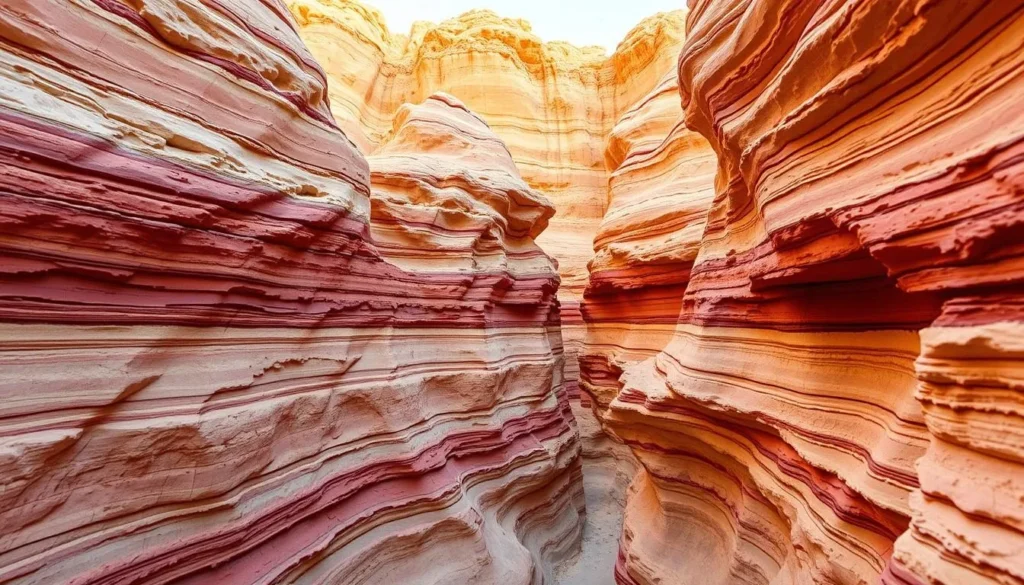
Geology Exploration
The canyon walls reveal 300 million years of geological history through their distinct rock layers. Each stratum tells a story of ancient environments, from shallow seas to windswept deserts. Interpretive signs at the overlook help visitors understand the remarkable geological processes that formed this landscape.
Nearby Cultural & Natural Attractions
Goosenecks State Park makes an excellent stop as part of a broader exploration of southeastern Utah’s remarkable landscapes and cultural sites:
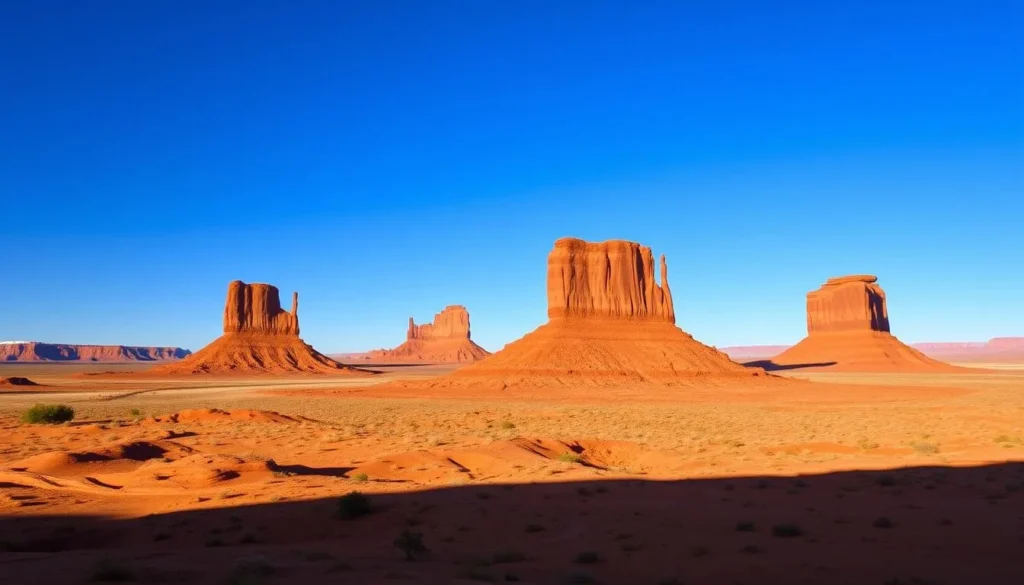
Valley of the Gods
Just 10 miles from Goosenecks, this scenic area features isolated red sandstone monoliths, buttes, and mesas similar to Monument Valley but with fewer visitors. A 17-mile dirt road loops through the valley, offering close-up views of these dramatic formations.
Monument Valley
Located about 30 miles from Goosenecks, this iconic landscape of towering sandstone buttes has been featured in countless films and advertisements. The Navajo Tribal Park offers guided tours that provide cultural and historical context.
Natural Bridges National Monument
About 50 miles from Goosenecks, this monument protects three natural bridges carved from white Cedar Mesa sandstone. A 14 km (9-mile) scenic drive connects viewpoints for all three bridges, with hiking trails leading to their bases.
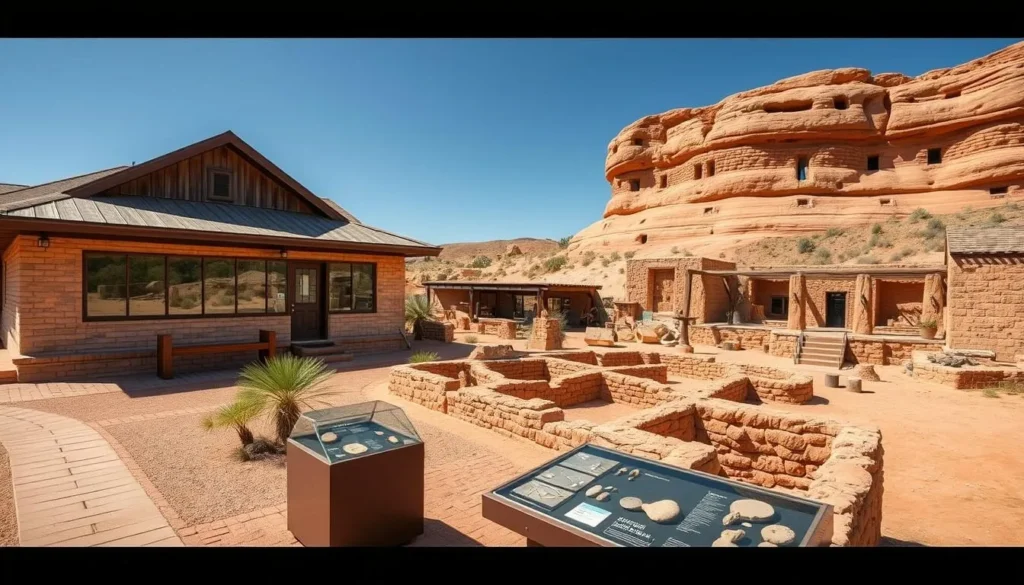
Cultural Heritage Sites
The region surrounding Goosenecks is rich in Native American history and culture. The Edge of the Cedars State Park Museum in Blanding houses one of the largest collections of Ancestral Puebloan pottery in the Southwest. Nearby, Bear Ears National Monument protects thousands of archaeological sites and holds deep significance for multiple tribal nations.
Explore the Region’s Wonders
Discover guided tours and activities throughout Utah’s Canyon Country
Safety, Etiquette & Practical Tips
Visiting Goosenecks State Park safely requires preparation and awareness of the unique desert environment:
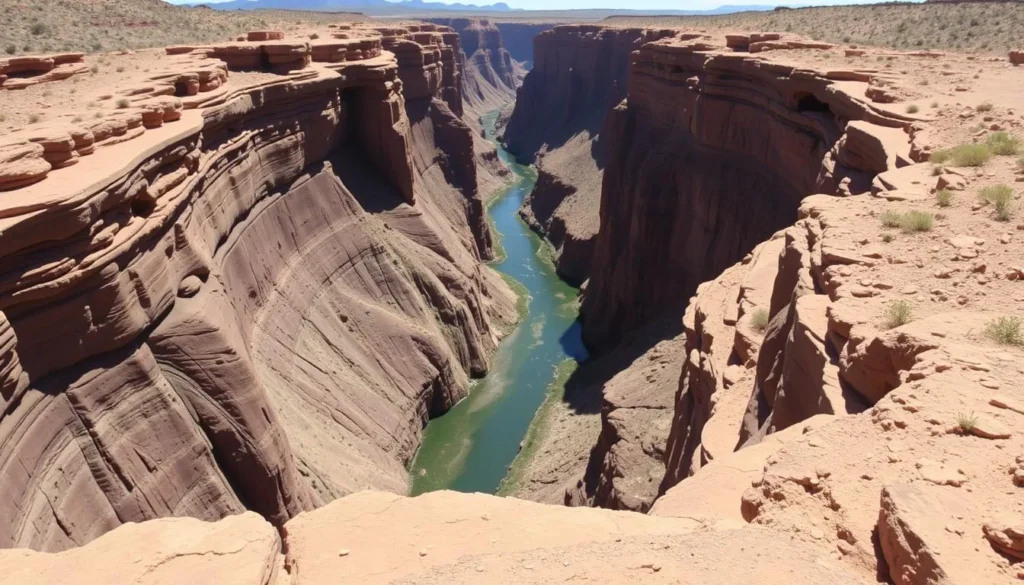
Safety Considerations
- Rim Safety: There are no guardrails at most viewpoints. Stay at least 2 m (6 ft) from the edge, especially in windy conditions.
- Water: Bring at least 4 liters (1 gallon) of water per person per day, as there is no drinking water available at the park.
- Sun Protection: The park offers virtually no shade. Bring sunscreen, hats, and protective clothing.
- Weather Awareness: Be prepared for sudden weather changes and check forecasts before visiting.
Visitor Etiquette
- Leave No Trace: Pack out all trash and leave natural features undisturbed.
- Cultural Respect: The surrounding lands hold cultural significance for Native American tribes. Respect archaeological sites and cultural resources.
- Quiet Hours: If camping, observe quiet hours from 10 PM to 7 AM.
- Drones: Check current regulations regarding drone use, as they may be restricted.
Emergency Preparedness: Cell service is limited or non-existent in the park. The nearest medical facilities are in Blanding (60 miles) or Monticello (75 miles). Consider carrying a satellite communication device for emergencies.
Essential Practical Information
| Information | Details |
| Park Hours | Open 24 hours, year-round |
| Entrance Fee | $5 per vehicle (up to 8 people) $2 per person for commercial tours $10 per night for camping |
| Facilities | Vault toilets, picnic tables, fire rings at campsites No water, electricity, or dump station |
| Pets | Allowed but must be leashed at all times |
| Contact | Goosenecks State Park c/o Edge of the Cedars State Park Museum 660 West 400 North, Blanding, UT 84511 (435) 678-2238 |
Is there access to the San Juan River from the park?
No, there is no direct access to the river from within Goosenecks State Park. The Honaker Trail, located outside the park boundaries, provides rugged access to the river but requires experience and preparation.
Can I reserve a campsite in advance?
No, camping at Goosenecks is first-come, first-served only. There are approximately 6 primitive sites available. During peak seasons (spring and fall), arriving early is recommended to secure a spot.
What is the best time for photography at Goosenecks?
The golden hours around sunrise and sunset provide the most dramatic lighting. Early morning often offers calmer conditions, while sunset creates rich, warm tones on the canyon walls. Night photography is exceptional due to the park’s Dark Sky designation.
Experience the Timeless Wonder of Goosenecks
Standing at the rim of Goosenecks State Park offers more than just a scenic vista – it provides a window into Earth’s ancient past. As you gaze down at the San Juan River’s sinuous path carved through 300 million years of geological history, you’ll gain a profound appreciation for the immense forces and timescales that shaped our planet.
Whether you come for the spectacular photography opportunities, the unparalleled stargazing, or simply to stand in awe before one of nature’s most remarkable sculptures, Goosenecks State Park delivers an experience that transcends the ordinary. This hidden gem of Utah’s Canyon Country may be small in size, but the impression it leaves is immeasurable.
Ready to Witness Geological Time Carved in Stone?
Start planning your journey to Goosenecks State Park today!
The above is subject to change.
Check back often to TRAVEL.COM for the latest travel tips and deals.
